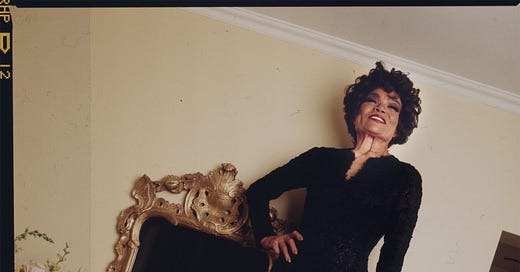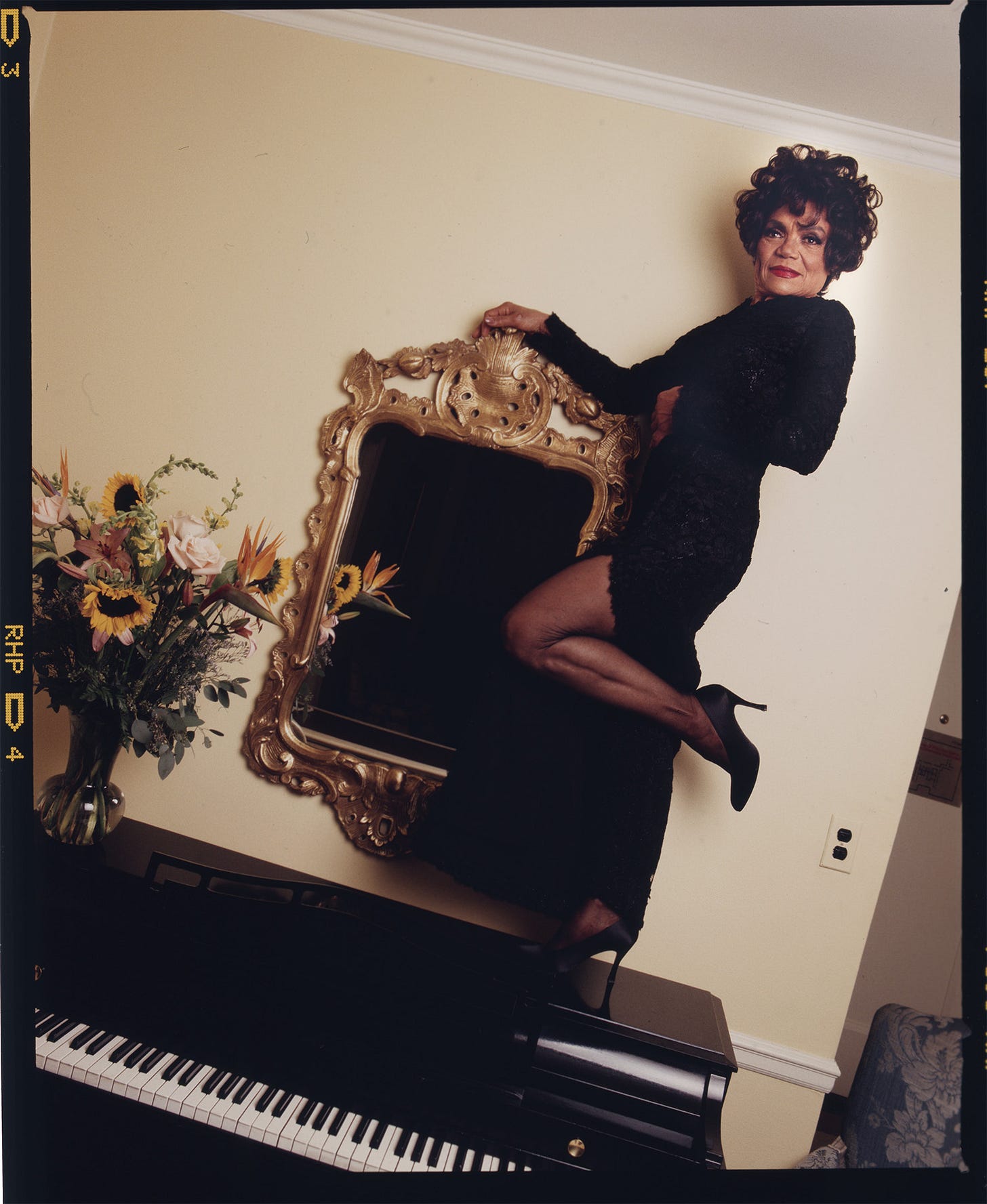“What are you going to do if you ever have to photograph Warren Beatty?”
I stared back at my stylist Tracey Garret through a stray dreadlock or two, and brushed some crumbs insouciantly off my grungy black Gap pocket t-shirt.
“Uh, I don’t know?”
For a six-foot three-inch white guy with dreadlocks (an unusual combination at the time, and one my kids tell me is right out nowadays) it was odd I hadn’t considered my appearance a little more carefully. I had peripherally noted bystanders’ reactions but tried so hard to suppress giving them the pleasure of a reaction to their reaction that I completely missed the memo.
Tracey taught me two things: dress like a waiter, they will treat you like a waiter; and it requires just as little effort to put on a suit as t-shirt and jeans. She was, of course, right on both counts. I cut off my dreads in ‘92 or ‘93. Until then, the suit thing turned out to be a way to instantly get treated better by people. They might still double take or drop their forks but suit with dreads was nominally better than dirtbag with dreads.
Tracey nearly literally dragged me out and up to Grand Central Station, which contained our destination: Dollar Bill’s. This discount clothing place was amazing, and not only would I not have known about it if not for Garret’s tutelage, but I never would have been able to navigate it. It was a madhouse, with brilliant crimson three piece suits tucked up right next to pink camouflage (concealment from what I dared not ask) rubbing up next to Tom Wolfe-from-the-eighties-esque white linen with huge lapels, a dizzying array of clothing, some of it qualifying as suits in only the vaguest of terms. If I didn’t know enough to know I needed a suit I certainly didn’t know enough to pick one out this mad cacophony of pattern and fabric.
Tracey tried to teach me about shopping, but never could. There were times we went up to Dollar Bill’s and returned empty handed. “Cost of the hunt,” Tracey would mutter when I expressed sadness at our failure. But boy, sometimes, we’d hit the jackpot. Once I was standing in the aisle, stunned, when Tracey’s face lit up. One thing about Dollar Bill’s: the styles and colors were an utter mad jumble but the size racks were iron clad. It did make it slightly easier to those who knew what they were looking for. And when Tracey’s face lit up that day she’d spied a Glen Plaid two piece tweed suit. “Plaid?” I’m thinking. “Like Herb Tarlek?” I think she might have even batted me over the head with her umbrella.
“Oh my God, Glen Plaid is fabulously classy, King Edward was wearing it when he abdicated and you would do well to wise up and get with the program.” Of course, he turned out to be a Nazi. And you know, that Glen Plaid suit was my utter favorite until I got married in Armani a decade later. As easy to put on as pajamas, completely elevated the look no matter what else was going on. Tracey was right of course. I made it a habit to hang out with smart women who told me what for when I needed to hear it and this was no exception. Glen Plaid it was, on a steep discount no less.
Not quite Warren Beatty, but the fashion avatar in question turned out to be Eartha Kitt, Miss Catwoman Kitka herself, certainly the most glamorous woman I’ve ever photographed. We were to shoot in her suite at the Carlyle, a tony boutique hotel just off the Park on the Upper East Side. Not my usual haunt, believe it. But I looked and felt a million bucks in my Glen Plaid two piece tropical wool suit. Ms. Kitt, until she tells you to call her Eartha, performed a long running gig as a chanteuse at the Carlyle. An upscale boutique hotel before such things became common, the Carlyle feigned a kind of Cabaret like decadence but really seemed to be just a lot of rich old ladies and their beards.
Ms. Kitt is forever burned into my consciousness as the brain meltingly hot Catwoman from the 60’s Batman TV show. I was four years old when it came out, but certainly watched a lot of reruns during puberty. Any one of the three Catwomen were stone cold foxy, but Eartha Kitt may have been the hottest.
Twenty five years after the fact, Catwoman was nowhere to be seen, much to the disappointment of internal proto-pubescent Chris X Carroll. In her place was something actually much more intriguing. First, in keeping with the scale of everything about the hotel, Ms. Kitt was tiny. Yet inexplicably rocked the gravitas. Owned the room without even a word. I’d never seen posture like that and wouldn’t again until I started hanging out with rowers decades later. Part and parcel of that was the way she moved. John Prine has a line, “The wind was blowing, particularly through her hair,” that’s one way I can think to describe it. One could immediately see how she was cast as Catwoman but the feline thing is far too easy.
Known mostly as a singer and actress, nothing in her bio talks about dance. And by the time I worked with her she wasn’t really “sexy.” But she was utterly uniquely compelling, you could not take your eyes off her even for a second. I’ve never seen anything like it before or since. Belay that, Daisy Fuentes has entered the chat. Still, holy shit, you couldn’t take your eyes off her, especially when she moved. When Eartha Kitt crossed the room to pick up a warmup on her cup of coffee all conversation stopped and everyone watched her do it, in silence, many with mouths literally agape. I don’t think I’ve ever wanted a video camera on a shoot more than that very moment. Shooting stills just didn’t capture her essence. I like the shots, but in a sense I failed. Stills seem just not strong enough to illuminate Eartha’s dynamic affect.
Of course, she has that voice that booked a thousand gigs, but you know, still photos aren’t doing much to memorialize that either. It’s not an affect, she orders a coke in the same purr that Catwoman threatened Batman. Funny, it was just one of a hundred gigs, and I was just one of hundreds of photographers shooting celebrities. But I knew this would be my one chance to make a portrait of an amazing woman so I gamely did what I could do. Twyla Tharp notwithstanding, sometimes I think back and I long for the ease and wonder of a modern iPhone. Imagine shooting this job with a camera I kept in my pocket, which required no lights, made everyone look great, and even recorded video with sound. 1990 was still analog city though, not even crappy Y2K digital my kids are so fond of.
And so, to work. The problems were technical, caused by too little space, too much black stuff (ie the Baldwin baby grand which “baby” or not still nearly filled the room), and not enough room to maneuver. Putting her up on the piano seemed simultaneously like the greatest move ever or the stupidest thing. She was tiny, and no matter how smooth and beautifully she moved there was an absolute vulnerability and fragility to her as well. I was putting this tiny old lady in giant heels up on a slick and dangerous looking piano.
And this was no Chateau Marmont, no daylit immaculate taupe rugs, just a fairly tiny hotel room crammed full of furniture. And that furniture was old school, antique city, awful in my book. Let’s just say it was no Dialogica.
I would have preferred ever so much to have been able to work with her in a big beautiful beauty studio with open daylight but I did what I could. And as well as being a sylph-like being of light whose every move was a picture, she was a pro, happily doing everything asked of her, repeatedly, hitting her mark every time.
We finished our shoot and we were all making thank yous and preparing to watch Ms. Kitt waft out of the room. She gestured to me and I leaned down (did I mention she was tiny?) and close so I could hear her whisper (ok, FINE, she was also sexy), “Glen Plaid. Perrrrfect!” And then she was gone, headed downstairs to perform another set as the chanteuse while we packed up our lights and headed back downtown, grinning with confidence all the way home.






